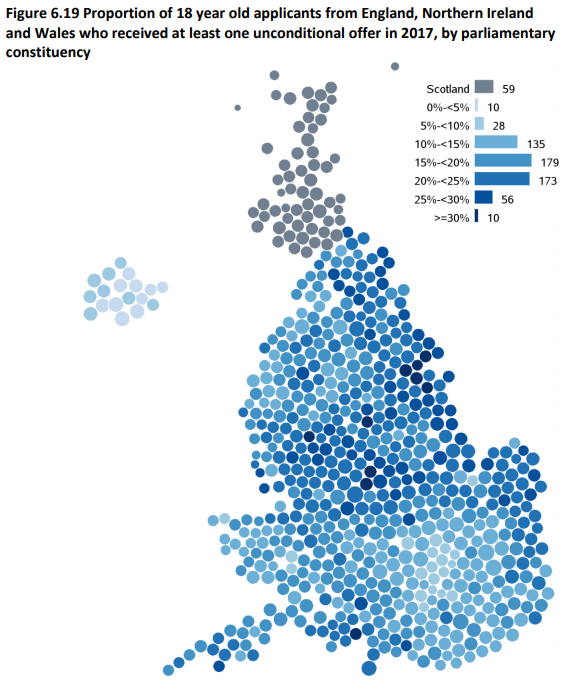One of the headlines from the latest annual summary report on UK university applications was the growth in “unconditional” offers being made to school pupils before they do their final exams.
In England, Wales and Northern Ireland, there has been a 40 per cent rise in these offers, which allow a prospective student to take up a place at university irrespective of the final qualifications they achieve, since last year.
But in which subjects are such offers being commonly made and are there any other factors that may be contributing to how likely a prospective student is to receive one?
Ucas did release subject data on the offers that show that there was wide variation in the disciplines that were most likely to issue unconditional offers.
The mass communication and documentation group, which includes courses in subjects such as media studies and journalism, saw the highest proportion of unconditional offers with 8.9 per of applications receiving one.
There were a further seven subject groups where the share of unconditional offers was higher than 5 per cent, including some such as creative arts and design (7.3 per cent) where, according to Ucas, offers “will be dependent upon an applicant’s portfolio, as well as their predicted grades”.
However, other subjects in this band – such as computer sciences – may not have such an obvious rationale for why unconditional offers are higher.
At the other end of the scale, medicine and dentistry was the subject group where unconditional offers had the smallest share of all offers made, at fewer than 0.1 per cent. Subjects allied to medicine also has a small share, at 1.4 per cent.
The Ucas data also show where in England, Wales and Northern Ireland prospective students were more likely to receive at least one unconditional offer. Those living in London and South East England had the lowest proportions of 18-year-old applicants getting such offers while the highest shares by parliamentary constituency were seen in the Midlands.

As pointed out in the Times Higher Education news piece on the report, there has also been a shift away from unconditional offers being made more often to those with the highest predicted grades.
In 2014 and 2015, applicants who were predicted to get 15 A-level points (equivalent of three A grades) were the most likely to get an unconditional offer. In 2016, those predicted 12 points (same as BBB) were just as likely as those predicted 15 points to get an unconditional offer. But by 2017, applicants predicted 12 points were the most likely to receive an unconditional offer.
But unconditional offers are seemingly still not made in large numbers by every institution: there were 62 institutions where such offers represented less than 1 per cent of all offers made this year, although this figure has fallen from 100 universities in 2014. At the same time, in 2014 there were only two institutions where unconditional offers made up more than one fifth of all offers; in 2017 this happened at 13 institutions.
Find out more about THE DataPoints
THE DataPoints is designed with the forward-looking and growth-minded institution in view
Register to continue
Why register?
- Registration is free and only takes a moment
- Once registered, you can read 3 articles a month
- Sign up for our newsletter
Subscribe
Or subscribe for unlimited access to:
- Unlimited access to news, views, insights & reviews
- Digital editions
- Digital access to THE’s university and college rankings analysis
Already registered or a current subscriber?


